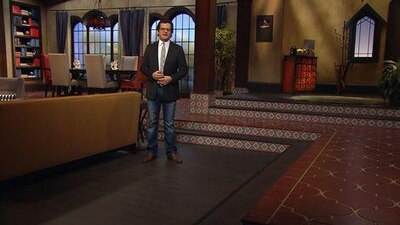The Sun Comes Up

Brief Synopsis
Cast & Crew
Richard Thorpe
Jeanette Macdonald
Lloyd Nolan
Claude Jarman Jr.
Lewis Stone
Percy Kilbride
Film Details
Technical Specs

Synopsis
Soprano Helen Lorfield Winter has been in seclusion and has not performed in an opera since the death of her husband three years earlier. Helen has developed an obsessive devotion to her young son Hank, rarely leaving his side, but with help from her devoted concert manager, Arthur Norton, Helen eventually overcomes her fears and agrees to return to the opera. She makes a sensational comeback, playing to a sold-out concert hall, but the evening takes a tragic turn when Hank is struck and killed by a truck while chasing after his collie, Lassie. Overcome by grief, Helen confines herself to her bed and is placed under the care of Dr. Gage. When Dr. Gage tells Helen that she must stop avoiding children and resume her normal life, Helen makes plans to leave the city and never return. Believing that Lassie had indirectly caused her son's death, Helen decides to leave the dog behind. She changes her mind, however, after her maid convinces her that Hank would have wanted Lassie to be with her. After driving along the California coast, Helen arrives at the small town of Brushy Gap, where she rents a mountain house owned by writer Thomas I. Chandler. The house is managed by the town's general store proprietor, Willie B. Williegoode, who tries to acquaint Helen with the rural lifestyle. Helen is reluctant to shed her big city ways for simple country living, but her transition is helped by a friendship she develops with a young boy named Jerry. Jerry adores Lassie and helps Helen with her chores. Despite her warm relationship with Jerry, Helen soon develops a reputation in town of being unfriendly to children, thus inviting the scorn of the children and their mothers. However, the townspeople forgive Helen after she apologizes to them, and the children eventually accept her as a friend. When Helen discovers that Jerry and his friends all live at an orphanage, she begins to suspect that Jerry is waiting for her to adopt him. To avoid the adoption issue, Helen decides leave Brushy Gap to resume her singing career. One day, while Helen is away on a short trip, Jerry falls into a river and develops pneumonia. When Helen returns to Brushy Gap, she finds Tom living in her house and caring for Jerry. After being nursed back to health, Jerry accepts that Helen is leaving, and tries to ease her conscience by telling her that his mother lives in a nearby town and that he will return to her. Helen tries to leave Brushy Gap but returns when she hears the sounding of the town fire bell and realizes that the orphanage is on fire. While Tom and other townspeople try to extinguish the blaze, Lassie indicates that Jerry is trapped inside the burning building. Tom rescues Jerry with Lassie's help, and Jerry later admits to Tom that he lied about having a mother. However, the near tragedy has prompted Helen to realize her motherly love for Jerry, and she decides to adopt him and stay in Brushy Gap.

Director

Richard Thorpe
Cast

Jeanette Macdonald
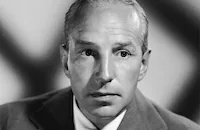
Lloyd Nolan

Claude Jarman Jr.
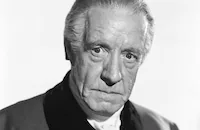
Lewis Stone
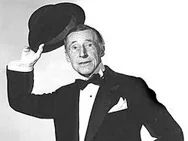
Percy Kilbride
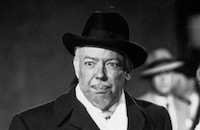
Nicholas Joy

Margaret Hamilton

Hope Landin

Esther Somers
Lassie
Dwayne Hickman
Teddy Infuhr
Barbara Billingsley
Charles Trowbridge
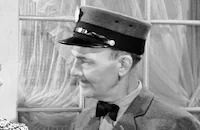
John A. Butler
Ida Moore
Peter Roman
Mickey Mcguire
Cameron Grant
John Sheffield
Douglas Carter
Wilson Wood
Barry Norton
Paul E. Burns
Timmy Hawkins
Alan Dinehart Iii
Michael Dill
Charles Bates Perry
Jimmy Crane
Bobby Beyers
Cy Stevens
Cosmo Sardo
Stuart Holmes
George Calliga
Albert Pollet
Ed Agresti
Cecil Stewart
Jessie Arnold
Guy Wilkerson
Henry Sylvester
John Beck
Ed Peil Sr.
Frank Pharr
Crew
Paul Bourget
Jack Dawn
Dale Deverman
Randall Duell
Antonín Dvorák
Norwood Fenton
Margaret Fitts
Guiseppe Giacosa
Cedric Gibbons
James Gooch
Adolf Heyduck
Hugh Hunt
Luigi Illica
Irene
Al Jennings
Ray June
Natalie Kalmus
William Katz
Mollie Kent
William Ludwig
Natalie Macfarren
James Manatt
Warren Newcombe
Sergei Petschnikoff
André Previn
André Previn
Mervyn Price
Giacomo Puccini
René Alphonse Rabey
Anton Rubinstein
Douglas Shearer
Robert Sisk
Irvine Warburton
Edwin B. Willis

Photo Collections
Videos
Movie Clip



Trailer
Hosted Intro
Film Details
Technical Specs

Articles
The Sun Comes Up
MacDonald plays an opera singer embittered over her son's tragic death who learns to connect with other people again thanks to a relationship with a young boy who befriends her dead son's pet dog. The dog was played by Lassie, the ultra-smart collie who had debuted opposite no less than Elizabeth Taylor in Lassie Come Home (1943). (There had been an animal actor named Lassie in the silent era as well.) The boy was played by Claude Jarman, Jr., the child star of another heartwarming animal story, The Yearling (1946). Jarman's casting was appropriate enough, since both the earlier picture and this one were based on stories by Marjorie Kinnan Rawlings.
The Sun Comes Up was filmed on location 375 miles from Hollywood in the Santa Cruz mountains. MacDonald had to be under constant medication because of her severe allergy to dogs. (Her allergies had also forced the studio to use thousands of artificial flowers in her earlier film Smilin' Through, 1941.)
The Sun Comes Up was helmed by long-time studio director Richard Thorpe, who never made any truly great films but whose technical proficiency and dependability put him in charge of productions starring many of the studios biggest names, including Hedy Lamarr, Joan Crawford, and Robert Montgomery. Thorpe also has the distinction of being the original director of The Wizard of Oz (1939). After a few weeks, however, his approach was deemed unsuitable and all his footage scrapped and re-shot. After completing this picture, Thorpe was re-teamed with his canine star in Challenge to Lassie (1949), after which the pooch followed Miss MacDonald into big-screen retirement.
Although her retreat from a film career can be blamed largely on an increasingly debilitating heart ailment (which eventually took her life at the age of 61 in 1965), MacDonald continued to make concert and TV appearances after this. Her last radio appearance was a broadcast version of this same story on Screen Guild Theater in March 1950.
The Sun Comes Up is also significant for being the first film scored by noted composer Andre Previn. He was barely 20 when he was given his big break by producer Robert Sisk after working a few years as arranger and music director. Although he found the story "pure insanity" and thought MacDonald's voice was "a bit peculiar," he found the star to be a hard-worker and "the soul of kindness." Placing his own compositions beside those of Dvorak, Puccini and other classical composers (whose songs were sung by MacDonald in the picture), Previn's work was well-noted by Sisk and Thorpe, who used him on the Lassie sequel mentioned above. From these humble beginnings, Previn went on to create noteworthy scores, adaptations and songs for such films as Gigi (1958), Porgy and Bess (1959), Elmer Gantry (1960), and Valley of the Dolls (1967).
Director: Richard Thorpe
Producer: Robert Sisk
Screenplay: Margaret Fitts, William Ludwig, based on a story by Marjorie Kinnan Rawlings
Cinematography: Ray June
Editing: Irvine Warburton
Art Direction: Randall Duell, Cedric Gibbons
Original Music: Andre Previn
Cast: Lassie, Jeanette MacDonald (Helen Lorfield Winter), Lloyd Nolan (Thomas Chandler), Claude Jarman, Jr. (Jerry), Lewis Stone (Arthur Norton), Margaret Hamilton (Mrs. Golightly).
C-93m.
by Rob Nixon

The Sun Comes Up
Quotes
Trivia
Notes
Working titles for this film were A Family for Jock and Sun in the Morning. A February 1948 Hollywood Reporter news item indicates that M-G-M bought the rights to Marjorie Kinnan Rawlings' unpublished story "A Family for Jock," retitled it "Mountain Prelude," and sold the literary rights to The Saturday Evening Post. The story appeared The Post and has never been published in novel form. A January 1947 Daily Variety news item noted that Elizabeth Taylor, who had appeared in the first "Lassie" picture, was originally set to star in The Sun Comes Up. The film marked the final screen appearance of Jeanette MacDonald, who left motion pictures to pursue her stage and concert hall career. Some filming took place on location in Santa Cruz, CA. The film marked André Previn's first screen credit as a composer. The first film for which he received screen credit as a conductor was It Happened in Brooklyn. For more information on the "Lassie" series, consult the Series Index and see the entry below for Lassie Come Home.




